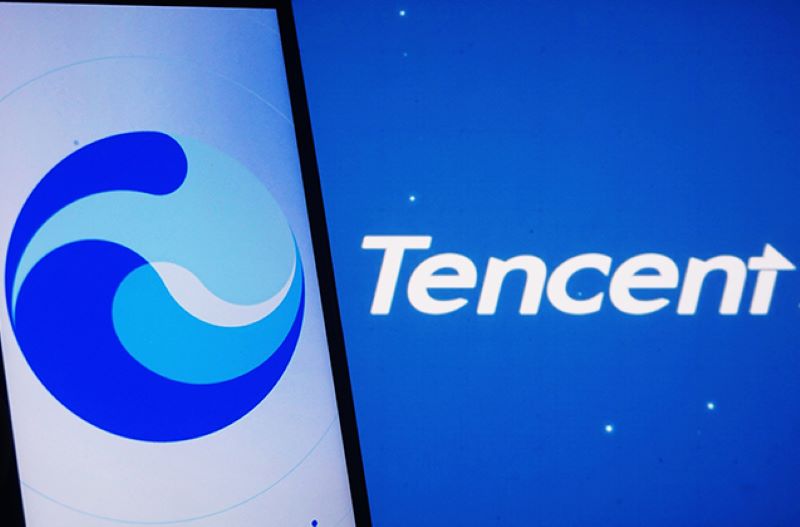In today’s era of rapid advancements in artificial intelligence, the deep integration of technology iteration and scene implementation has become the core driving force for industry development. With the continuous popularity of AI applications, users are placing higher demands on model performance, adaptability, and deployment costs, especially in edge devices and vertical industries. Low-power, high-efficiency, and easy-to-deploy small-scale models have gradually become the key direction for technological breakthroughs. How to bring powerful AI capabilities out of data centers and integrate them into various daily devices has become a crucial issue for the industry to solve.
On August 4, 2025, Tencent’s Hunyuan team made a significant move to address this issue by announcing the open-source release of four small-scale models, with parameter scales of 0.5B, 1.8B, 4B, and 7B. This action not only enriches the ecosystem of open-source models but also provides unprecedented opportunities for low-power devices and vertical applications with its “lightweight” and “high-performance” technical characteristics. It marks a new stage in the development of AI technology in edge-cloud collaboration and scene adaptation.
Ingenious Design, Adaptable to Diverse Scenarios
The four small-scale models newly open-sourced by Tencent Hunyuan are meticulously designed and optimized specifically for consumer-grade graphics cards. This optimization allows the models to perfectly adapt to low-power scenarios such as laptops, mobile phones, smart cabins, and smart homes. In the case of mobile phones, many AI applications have traditionally struggled to run smoothly or fully perform due to device computing power limitations. However, with Hunyuan’s small-scale models, mobile phones can now easily handle complex AI tasks, such as enabling intelligent voice assistants to quickly and accurately understand user commands and provide services.
For smart cabins, low-power and high-efficiency models mean that, even with limited in-car computing resources, more powerful interactive functions can be achieved, such as precise voice navigation and intelligent analysis of vehicle status. In smart home environments, these models help smart appliances better understand users’ daily habits, enabling more intelligent home control, such as automatically adjusting light brightness and temperature based on the user’s daily schedule. The models also support low-cost fine-tuning for vertical industries. Whether it’s in the medical field for intelligent analysis of patient data or in education for personalized learning plan development, these models can be customized at a lower cost to meet the unique needs of different industries.
Exceptional Performance, Showcasing Technological Strength

In terms of performance, the Hunyuan small-scale models stand out. For example, Hunyuan 7B surpasses models like OpenAI’s o1-mini and Qwen 3-8B in mathematical ability. In the mathematical reasoning test DROP, Hunyuan 7B achieved an excellent score of 85.9, and on the AIME2024 and AIME2025 math leaderboards, it scored 81.1 and 75.3 respectively, both ranking at the top. These achievements fully demonstrate the model’s powerful logical reasoning and problem-solving capabilities.
These models also feature a unique fused reasoning architecture, offering both “fast thinking” and “slow thinking” modes. The fast thinking mode, like an experienced expert, can quickly provide concise and efficient answers to simple questions, meeting the need for rapid information retrieval. On the other hand, the slow thinking mode, similar to a meticulous scholar, carefully reasons through complex problems and provides accurate conclusions. For example, when planning a travel itinerary, the fast thinking mode can quickly suggest popular tourist spots, while the slow thinking mode considers the user’s budget, time, and preferences to create a detailed and personalized travel plan.
The models also support an extremely large context window of up to 256k tokens, giving them impressive long-text processing abilities. It can process and remember up to 400,000 Chinese characters or 500,000 English words of content in one go, almost like a super reader, capable of reading three entire Harry Potter novels and remembering all character relationships and plot details. In practical applications, this means the model can comprehensively understand and analyze lengthy documents or complex reports, providing strong information-processing support for researchers, corporate decision-makers, and others.
Wide Applications, Driving Industry Transformation
These four small-scale models have already been successfully applied in various Tencent businesses, demonstrating their powerful practical use. In Tencent Meeting, the AI assistant leverages the model’s native ability to handle long context, allowing it to understand and process the full meeting content in one go, generating meeting notes and extracting key points, significantly improving meeting efficiency. In WeRead, the AI question-answering feature helps readers by deeply understanding entire books and answering questions during the reading process.
On edge devices, Tencent Mobile Manager uses the small-scale models to improve spam message identification accuracy, achieving millisecond-level interception while ensuring user privacy with zero data upload. The Tencent Smart Cabin Assistant utilizes a dual-model collaborative architecture to fully leverage the model’s low-power, high-efficiency reasoning capabilities, effectively addressing interaction challenges in car environments. In high-concurrency scenarios, Sogou Input Method utilizes the model’s multimodal joint training mechanism to significantly improve recognition accuracy in noisy environments. Tencent Maps employs a multi-model architecture to optimize user interaction, while WeChat Input Method’s “Ask AI” feature allows seamless integration of the input box with AI-powered Q&A, providing users with a convenient input experience.
In vertical industry applications, the financial AI assistant, through prompt optimization and fine-tuning with minimal data, achieves more than 95% accuracy in intent recognition, demonstrating high reliability for financial business intelligence. Game translation and the NPC of QQ Speed leverage the model’s understanding abilities for multilingual understanding, dialect translation, and intelligent dialogue, contributing to the game industry’s internationalization and enriching player interactions. These capabilities also have enormous potential in professional customer service, cross-border content, and e-commerce live streaming.
Tencent Hunyuan’s open-sourcing of these four small-scale models is a significant reflection of its continuous commitment to AI innovation and active promotion of the open-source ecosystem. With their ingenious design, exceptional performance, and wide-ranging applications, these models offer AI developers and enterprise users more choices, and are expected to drive innovation and breakthroughs in more industries in the future. This marks the beginning of a new chapter in AI applications, and we eagerly await the further changes and developments that these models will bring to the industry.












